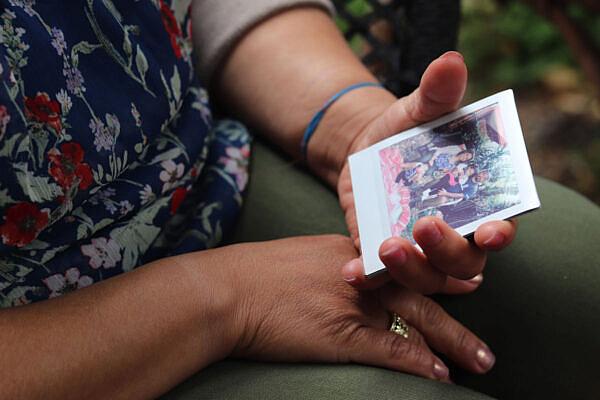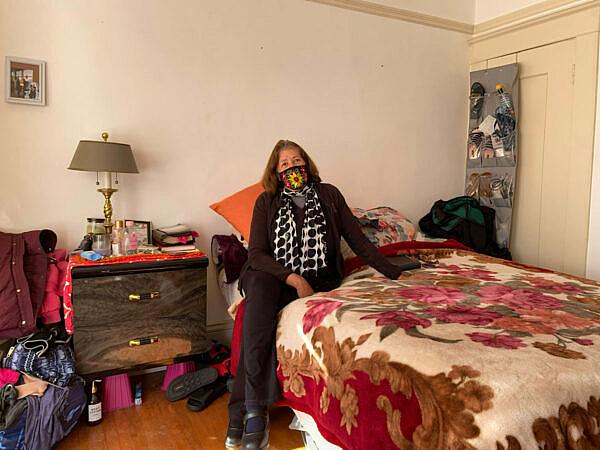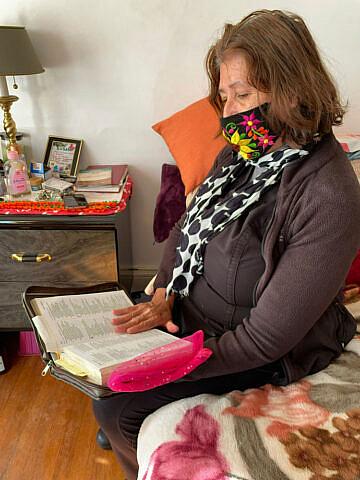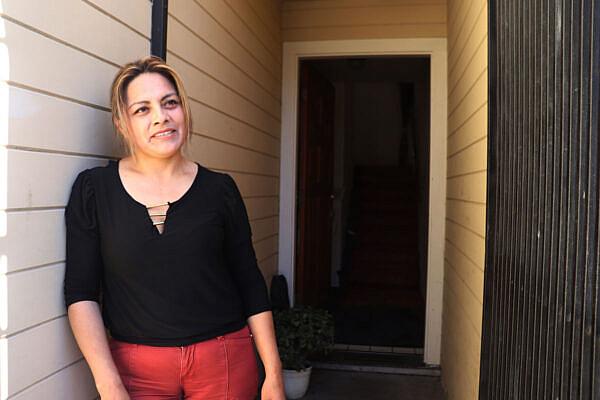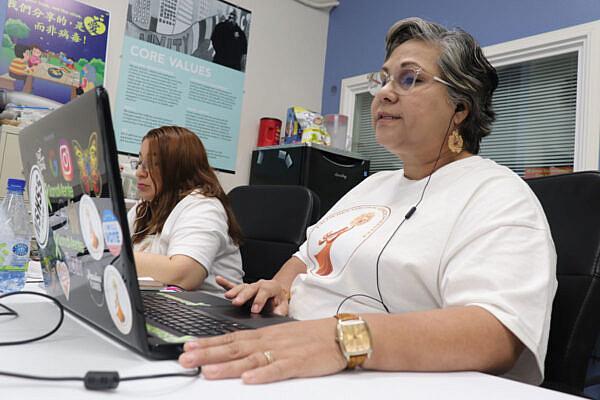This report is the first in a series that will cover the wealth and health stripping effects of the COVID-19 pandemic on the Latinx immigrant people of San Francisco. Our report is informed by the results of the “El Tecolote Survey 2021: Rent, Stress and the Pandemic in the Latinx immigrant community of San Francisco.” The survey was developed and gathered by El Tecolote with the support of the USC Annenberg Center for Health Journalism 2020 Impact Fund, and in collaboration with Mujeres Hacia El Conocimiento in alliance with Excelsior Works. Adriana Camarena and Alexis Terrazas (editor of El Tecolote) co-led the project.
We are endlessly grateful to the women of Mujeres Hacia El Conocimiento, as well as to the survey respondents, who took the time—often at the end of a long work day or on their one free day—to develop, gather or answer our survey. The El Tecolote Survey 2021 gathered 391 responses in a two week period. Nearly all respondents are foreign born Latinx immigrants, nearly all are tenants. Slightly over half are women. Most respondents are in the age group of 24-50 years old. The vast majority of respondents live in the five San Francisco neighborhoods most impacted by COVID-19 case rates: BayView/ Hunters Point, Visitación Valley, Tenderloin, Mission and Excelsior. Our survey responses were gathered from May 10-26, 2021.
We invite readers to visit our El Tecolote Survey 2021 webpage that will be continuously updated over the next two months with key findings and related El Teco news stories. We also provide more information about our survey methodology. We committed to respondents that we would deliver survey results back to our community, and raise up the voices and experiences of the Latinx immigrant people of the City during the pandemic. This is our first report.
Rent defeated the shelter-in-place order
As San Francisco began to shelter-in-place in March of last year, in an attempt to brace for a global pandemic that would go on to kill more than 591,000 people in the United States, Marta Salinas Cruz was giving birth to her second child, Joshua Emanuel.
Two-year-old Deborah Arleth plays with her baby brother, Joshua Emanuel. Photo: Alexis Terrazas
Giving birth amid the rampant spread of a novel coronavirus was surely stressful, but it paled in comparison to the stress of paying the rent to stay sheltered.
The day after her son was born, Marta—who migrated to San Francisco from El Salvador four years ago—was shooed out of the hospital by a nervous medical staff, back to her single room in a Bayview apartment, where her family of four would live: Marta, her husband Melvin Zuniga, their one-year old daughter Deborah Arleth, and the new baby.
The room was rented to them by the main tenant of the apartment—the Casera, or Landlady— who despite job losses resulting in plummeting wages, demanded that their $1,200 rent be paid in full.
“It was something very extreme, very worrying, because my husband’s wages went down. And unfortunately, the person we lived with didn’t give us a chance and say, ‘I’m going to give you a break.’ We had to be paying them. So that caused us extreme stress,” Marta said. “The lady who rents us the room said she didn’t want to get into trouble with the owner. And in order not to get in trouble, she demanded 100 percent rent from us.”
Sheltered in place in a single bedroom and caring for two infants, Marta’s family relied on the lone grocery store income of her husband Melvin. Melvin’s work had come to a sudden halt with the shelter-in-place order, but a few months later he was working part-time, and since then has kept working a reduced schedule at a warehouse that supplies food to Bi-Rite, a beloved niche supermarket in San Francisco.
Melvin Zuniga and his one year old son, Joshua Emanuel, both fell sick to COVID-19 during the pandemic. Photo: Alexis Terrazas
In December, Marta, Melvin and the babies, but also the main tenants (the landlady and her husband) became sick with COVID-19. It’s unclear who brought the contagion into the apartment. The contract tracers never provided a clear answer. For purposes of this article, where the main tenant acts as landlady or landlord to subtenants we will call them the “casera” or “casero”.
Their landlady was the first to fall sick, then the landlady’s daughter and husband. The landlady became ill enough to need hospitalization, but her husband refused to be interned. Quietly, and alone in the night, the casero died in his bed.
“[The landlady and her daughter] went to the hospital because the landlady had trouble breathing. Her husband stayed home, but still had a big cough, all kinds of problems, he couldn’t breathe. But he didn’t want to go to the hospital,” Marta said. “Unfortunately, one night he went to sleep, and didn’t wake up. Maybe it was COVID-related, but we don’t know for sure. After that, we became infected. And the fear, the horror that it caused us. Like, what is going to happen. It was very stressful.”
Marta Salinas Cruz holds a polaroid photo of her family. Photo: Alexis Terrazas
Baby Joshua is over a year old now. In the early years of his life, Marta and Melvin fell behind nearly three months’ rent, but today they are all caught up. They worry most about the next rent check, sending remittances back home, and paying the debt they took on with family and friends to survive the first year of the plague.
Working to keep up with the rent
Marta’s experience is similar to that of the majority of the Latinx foreign-born people who answered the El Tecolote 2021 Survey.
In the peak year of the pandemic, the large majority of the Latinx immigrant respondents living in the five neighborhoods hardest hit by COVID-19 case rates kept up or in earnest tried to keep up with their rent payments. Over half of the survey respondents mentioned that they paid their rent in full during the first year of the pandemic, while another 20 percent, at most, owed three months back rent or less.
Today, over 60 percent of survey respondents do not owe back rent.
It would appear that as the City reopens, the Latinx immigrant people of the City continue to reduce their rent debt on their own.
“As of right now, we don't owe any [rent debt], because we had to go into debt elsewhere,” Marta said. “We borrowed money from relatives. We used credit cards, because we didn’t receive help from any institution because they asked us for documents that we could not present and we had to pay. And where was I going with my children?”
Marta’s experience echoes the story of María Susana Lozano.
María Susana Lozano is 56 years old. She was born in Mexico City, and only four years ago came up to San Francisco following one of her daughters who married and moved to the Bay Area. Only her youngest son remains with her in the City. Her married daughter now lives in Seattle, and her two other daughters are in the military, stationed in Japan since the start of the pandemic.
María Susana Lozano poses for a photo in her home in San Francisco's Mission District. Photo: Adriana Camarena
Before coming up to San Francisco, María Susana and her family lived in Death Valley where she rented a home with a pool for one dollar.
“It was something out of this world. I went to the other [rent] extreme,” said María Susana. “I never imagined that I was going to pay so much.”
In March 2020, María Susana Lozano was living in a room within an apartment in Visitacion Valley paying $1,000 rent, and working as a housekeeper at The Ritz Carlton San Francisco. She lost her job early in the lockdown. Two months went by and she could no longer cover the rent payments. Like Marta Salinas’s casera, María Susana’s casera would not allow a delay in the rent.
María Susana feels fortunate to have found a new line of work as a janitor. Since May 1, 2020, she has worked for a cleaning company. At first, she cleaned an Amazon warehouse, then the Post Office on Lombard Street, and now she cleans the offices of a self-driving car company near Embarcadero.
“Maybe I'm wrong, but I’m thankful for those who panicked,” María Susana said. “I was able to find a job because no one wanted to leave their house. Because they didn’t want to get infected. The buses were empty. I think I was the only one riding. People asked me, ‘Aren’t you afraid?’ No, I’m more afraid of not paying rent.”
María Susana is a woman of faith, and never feared the pandemic. She tells me she was more afraid to owe the rent and end up homeless, than to become ill with COVID-19.
“When you lose your job, you have a feeling of sadness, of despair, of what am I going to do,” María Susana said. “The despair is deep, because you depend on your job 100 percent. So I was very scared. Thank God I didn't get sick. Because as I said, I had to think positive. Because I wasn’t going to sit there and cry. I'm not going to solve anything by crying. So I had to fight on.”
María Susana never missed a single rent payment during the pandemic.
“Having a debt, I’ve never liked that. I think it already runs in the family,” María Susana said. “My dad taught us that debts have to be paid immediately. In Mexico, your debt is your word. If you give a word, you pay your debts. So for me, we always grew up with the idea that debts have to be paid."
In November of 2020, she left her Visitacion Valley room for a one room studio apartment in a massive multi-family apartment building off Mission Street near 18th Street.
“Yes, the rent is more expensive. It’s $1,400,” said María Susana, whose landlady allowed her to pay her deposit in installments. “But my son moved in with me, and we’ve been able to split the rent between the two of us.”
María Susana Lozano reads from her bible in her home in San Francisco's Mission District. Photo: Adriana Camarena
María Susana is a Seventh-day Adventist and it was her other fortune that she was able to connect and congregate during the pandemic with a new and small group that gathers in Daly City. When asked what her life would have been without her church group, she shakes her head in dismay at what that would have been like.
Reading from her worn Bible, she recites: No evil shall befall you, Nor shall any plague come near your dwelling; For He shall give His angels charge over you, To keep you in all your ways. (Psalm 91: 10-11)
During our interview, the golden light of the setting sun hit the billowing curtained Victorian windows of her single room: a quiet, pleasant, airy, sunny, if very expensive room.
Rent stress
Rent payments were not being made out of an abundance of income in the Latinx community, but out of an abundance of fear of homelessness.
When we asked respondents what level of stress paying the rent made them feel during the first year of the pandemic, close to 60 percent responded that they felt extremely stressed or high stress. The overwhelming fear of eviction was mentioned as the motivation to pay rent.
Equally stressful were the home utilities bills (gas, electricity, water, trash and wifi). And for respondents with dependents living through the COVID-19 pandemic in Mexico, Guatemala, El Salvador, Honduras, Peru and other Latin American nations, the need to send remittance monies back home also caused the majority of those people extreme or high stress.
The rent stress expressed by the Latinx immigrant respondents may be surprising to some given that there has been a California Eviction Moratorium since August 31, 2020, when AB 3088 was enacted. The COVID-19 Tenant Relief Act (SB 91) extended those protections on Jan. 29, 2021. In simplified terms, tenants with financial hardship could remain safe from eviction, if they provided notice of their hardship to their landlord when rent was due, and if they paid 25 percent of their rent. Landlords then had the option of taking tenants to small claims courts for the remainder when the moratorium lifted in July 2021.
When I ask María Susana, if she had heard of the state's eviction moratorium, she explained
“Yes I heard of it,” she said. “The idea of having a debt terrifies me. So I did everything possible, even the impossible, to cover my rent, however I could. Selling face masks. Selling tamales. Even collecting bottles, to stay debt free. I am very afraid of having a debt.”
María Susana points out that people like herself live paycheck to paycheck and cannot afford to accumulate any rent debt.
Desperate for income in a prison of privilege
Fabiola Aguilar was born in Hidalgo, Mexico, she is 40 years old, and a single mother of three, living in a house in the Bayview. She moved to San Francisco 19 years ago, arriving as a single mother with her three-year-old first born, who recently graduated from U.C. Merced, making momma proud. Fabiola’s youngest, Bryan, is 14 and dreams of being an architect. Her 16-year-old daughter, Genesis, loves to skateboard.
Fabiola Aguilar poses for a photo in front of her home in San Francisco's Bayview neighborhood. Photo: Alexis Terrazas
Fabiola made us promise we would not make her cry in the interview, but our second question brought out the tears: “Did you have to use your savings to cover the rent?
“I had money saved with which I planned to celebrate my daughter’s 15th birthday,” wept Fabiola, who had amassed $20,000 in savings before the pandemic. “Well, from there we were using the money to pay bills, the rent, and since we couldn't even throw a party (due to COVID), the money gradually ran out, because work had slowed.”
"I watched the news and I think I saw that many people were being evicted from their homes for not being able to pay the rent. Despite supposedly that they couldn't do that,” Fabiola said. “So for me, it’s one of my biggest fears, not being able to give my children a roof to sleep under.”
Fabiola lost her job in a restaurant in May after becoming ill with COVID-19.
"When I got COVID, they didn’t hire me back,” Fabiola said. “The manager didn’t let me go back because I supposedly could infect someone, even though I was quarantined for two months.”
One day, desperate for income, Fabiola drew deep from her childhood memories and YouTube videos and started making tamales to sell. The first day she came back having sold only 8 or 9 of the 50 she folded.
“I was really down, and when I got home, I hid and cried so my children couldn’t see,” Fabiola said. “I didn’t know whether to continue or not. I was looking for work on the internet, but there was nothing.”
But she didn't give up. She persisted. She eventually found her corner in South San Francisco, where she continues to sell her tamales from 6 a.m. in the morning until she runs out. She’s now invested in a Mexican comal to improve the quality of her foods. She does this while picking up a few shifts a week at another job.
Fabiola Aguilar poses for a photo alongside her 14-year-old son Bryan in there home in San Francisco's Bayview neighborhood. The photo Fabiola is holding is of herself and her eldest son, Gael, who both migrated to San Francisco 19 years ago. Photo: Alexis Terrazas
Later when she heard of the eviction moratorium, she felt it wasn’t a viable option for her.
“I personally think it wouldn’t have helped me much,” Fabiola said. “If I only had to pay 25 percent of my rent, I couldn't afford that luxury like, 'Ah okay, you can wait like three months or a month or two months for me to give you the rent.' I couldn't afford it. The rent was accumulating more. Because if I couldn't pay at that time, say $3,000 or $ 2,000, then how was I going to pay $6,000 or $9,000 later?"
The most Fabiola ever owed was 2 or 3 months rent during the first year of the pandemic. Today, she owes no back rent.
“I love my hometown and I miss it a lot despite everything, but I think that this country is a prison, a prison where I can offer my children more things,” Fabiola said. “In Mexico we’re free. We can walk everywhere or do everything, but I don’t think that I could give my kids the same thing. Here, it’s like a prison but with more privileges.” For Fabiola, living in the prison of the United States is still worth it for her children, who will be able to find a freedom here that she will never enjoy.
Rent consumed savings and raised debt
Like Marta, María Susana and Fabiola, the overwhelming majority (90 percent) of our respondents found some sort of employment to earn some income in the first year of the pandemic. A third worked in the restaurant sector and another third carried out janitorial or domestic cleaning services. This was essential work, complemented by the assortment of odd jobs or small street vendor businesses initiated in the community.
Marta learned to sell her children’s used toys, clothes and strollers on Facebook Marketplace to earn a small extra income from home. María Susana imported artisanal facemasks from Mexico and veils for religious women to turn a tiny profit. Fabiola is still selling her tamales.
But despite the creativity and resourcefulness of our community, over 80 percent of respondents said that they had made less, much less or no income during the first year of the pandemic when compared to the year before the pandemic.
While some Latinx people were able to access one-time financial aids from an organization such as Catholic Charities or Undocufund, these incidents seem near mythical in the community. Most people tell tales of spending endless hours on the phone trying to reach Catholic Charities, or receiving a one-time benefit that helped them cover maybe a month's rent. Some who fell ill with COVID-19 say they were promised the two-week income “Right to Recover” debit card but it never arrived. Others tell that they were ultimately denied available aid because they could not show the right paperwork, as tenants or immigrants, or had taken unemployment benefits or any other number of red tape trip ups that seem to impact immigrant Latinx the most.
Without easily available economic relief, like the women in our story, most of the survey respondents wiped out their savings, whether small or large. A near 80 percent of our respondents resorted to using or depleting their savings, and when these ran out, 60 percent of respondents asked family and friends for loans to cover their pressing expenses. A third accumulated credit card debt.
Promotoras with Mujeres Hacia El Conocimiento gather results for the El Tecolote Survey 2021: Rent, Stress and the Pandemic in the Latinx immigrant community of San Francisco. The survey was developed and gathered by El Tecolote with the support of the USC Annenberg Center for Health Journalism 2020 Impact Fund, and in collaboration with Excelsior Works. Photo: Alexis Terrazas
For many immigrants, these lost savings amount to years of work vanishing into thin air. For many immigrants the new “debts of honor,” as María Susana called them, are their word among their peers. They are duty bound to make good on them.
But these are invisible economic losses and debts ignored by the policymakers developing the economic recovery packages. For Latinx immigrant families, the only recovery plan is to continue to work, work harder, work triple.
This is a worrisome plan, not only because of the continued exploitation of the undocumented and foreign born immigrant, but because the Latinx community was disproportionately impacted by a disease with lasting symptoms.
The Latinx population in San Francisco was the ethnic/ race group hardest hit by COVID-19 cases in San Francisco since March 2020. Hispanic or Latinx people of all races represent 40 percent of all cumulative COVID-19 cases, even though they are only 15 percent of the City population.
Poverty could be a lasting COVID-19 symptom
Our survey sample cannot directly correlate the disproportionate spread of the COVID-19 pandemic in the Latinx immigrant community with the stress felt among respondents to work to pay the rent, but we do know that among those respondents who took a COVID-19 test during 2020, over 42 percent tested positive for the illness. Of those, slightly over half were hospitalized for the disease.
The concern then becomes about the long-term health impacts of COVID-19 on a community that can only rely on its next paycheck to bail them out of a debt trap.
Marta and her husband Melvin wondered aloud to us if they were truly, fully recovered from COVID-19. Marta says she doesn’t feel quite the same as before. Both of them feel occasional headaches that are one of the known novel coronavirus lasting symptoms.
Fabiola says there is a noticeable difference in her respiratory capacity after having had COVID-19, feeling easily winded from a brisk walk.
And then there is the extreme stress of needing to pay the next rent and “los billes,” but now also the accumulated COVID-19 debts in an economic downturn.
In the pandemic, it would appear that the Latinx immigrant community was not only stripped of its health but stripped of its wealth: doubly impoverished by the COVID-19, and there is no low barrier access to medical or economic recovery in sight.
[This story was originally published by El Tecolote.]
Did you like this story? Your support means a lot! Your tax-deductible donation will advance our mission of supporting journalism as a catalyst for change.




